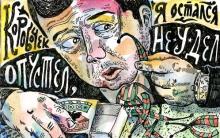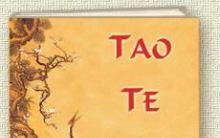The rich history of Hungary has left its mark on the national cuisine of this country. After French and Italian, Hungarian cuisine is considered third in the richness and variety of dishes, the number of spices and seasonings, as well as excellent taste.
Features of Hungarian cuisine
- boiled and stewed dishes prevail over fried ones;
- a lot of flour, eggs, tomatoes and paprika (7 types) are used;
- sour cream is often added to sauces, soups, vegetable, meat and flour dishes;
- There is practically no vegetable oil and butter, they are replaced by pork fat;
- meat - pork, beef and venison, less often - lamb;
- poultry – chickens, turkeys, geese and game;
- vegetables – bell peppers, eggplants, zucchini, cabbage;
- fruits of all kinds;
- dairy products;
- fish - from Balaton, Danube, Tisza, as well as small Hungarian rivers and lakes;
- Cooking often begins with frying the onions, which add flavor to the entire dish.
The main distinctive feature of Hungarian cuisine is the special attitude towards those people whose profession is related to cooking. Cooks in Hungary since the 11th century were actually a privileged class and could even receive the nobility. Such support for the profession at the state level could not pass without a trace. Therefore, Hungarian chefs have been famous throughout the world for centuries, and Hungarian cuisine has many dishes that tourists should definitely try.
Paprika

Red capsicum was brought from America by Christopher Columbus, and at the end of the 17th century the Turks brought it to Hungary. Paprika is used in almost every dish - pink, spicy, sweet, fiery... Paprika, which is not very hot and has a mild taste, has a deep bright red color. And the more spicy and hot varieties are colored in brownish-orange shades. Paprika is used both dried and fresh, unripe - for salads and side dishes.

The cities of Kalocsa and Szeged are the two capitals of paprika. In Szeged, by the way, you can also try the local fish soup - holasle.
For the discovery of vitamin C, Hungarian scientist Albert Szent-Gyorgyi received the Nobel Prize in 1937. He also discovered that paprika was high in vitamin C and learned how to extract it. Szent-Gyorgyi sent vitamin C crystals obtained from paprika to parts of the world where people suffered from scurvy.
Holasle

Balaton, Danube, Tisza and small rivers and lakes supply Hungary with fish of various types. This is primarily the famous pike perch, as well as catfish, pike, carp and carp. The flat, slow flow determined the presence of large fish in the rivers. And the peculiarities of the composition of the water - whether in Tisza or in Lake Balaton - determine the unique and inimitable taste of the local fish.
Holasle is a Hungarian river fish soup, the homeland of which is considered to be the city of Szeged on the Tisza River. Here, before cooking, the carp are kept in large cages in running river water (it is believed that the meat of pond carp smells like mud and this procedure helps get rid of its smell). Large pieces of catfish or carp are stewed with paprika, onions and pork fat. Do not stir the dish during cooking. Thin noodles are sometimes added to kholasle.
Goulash
Is goulash a thick soup or a thin stew? The goulash festival in Szolnok (120 km southeast of the Hungarian capital) annually answers this question. In essence, goulash is a group of dishes prepared according to a similar recipe and differing in the type of meat and other ingredients. Poultry and even fish are used, although the classics are veal or young beef. The Goulash Academy restaurant (Gyula) has 30 recipes for this dish.

The word "guyash" in Hungarian means "shepherd", which predetermines some freedom in the choice of ingredients for this dish. This thick soup consists of meat, paprika, tomatoes, potatoes, onions, carrots, sweet peppers, celery, cumin, garlic, bay leaves, parsley, salt, and small wheat dumplings or noodles.
Classic goulash recipe
Required Products:
Preparation:
- Cut the veal into cubes.
- Peel and finely chop the onion, garlic and carrots.
- Fry vegetables in pork fat for 7 minutes.
- Add meat to vegetables.
- Simmer for 10 minutes.
- Add paprika, cumin and a glass of water.
- Cook for 25 minutes over medium heat, adding water as it boils.
- Peel and chop the tomatoes.
- Peel the potatoes and cut into cubes.
- Place tomatoes and potatoes in a saucepan.
- Salt, pepper, add bay leaf.
- Cook until the potatoes are ready.
- Add noodles (wheat dumplings) and chopped garlic.
- Sprinkle with parsley before serving.
Other Hungarian dishes
Venison goulash soup in a loaf of bread- an original dish, essentially the same goulash, but in an unusual “packaging” - in a “pot” of freshly baked bread.
Paprikash– the general name for meat dishes made from different types of meat with the obligatory presence of paprika and sour cream. The technology for their preparation is simple, and the composition is democratic and allows for any type of meat, as well as the presence of tomatoes, onions, mushrooms, garlic and dry white wine.
Perkelt– the dish is thicker than goulash and contains more onions.
Lecho– tomatoes, paprika, onion, smoked sausage (served with dumplings).
– means “flame” in Hungarian and is a deep-fried yeast dough flatbread. The spread for it can be different:
- melted piece of cheese;
- pork cracklings with sour cream;
- sour cream sprinkled with grated cheese and garlic;
- garlic sour cream sauce.
Fast, appetizing and high in calories. It’s especially delicious to enjoy Lagos early on a cold morning, when there are still a few hours before lunch.

Sweet dishes– you can’t call them anything other than delicacies:
- Palachinta a la Gundel - pancakes with sour cream and dried fruits, generously sprinkled with chocolate.
- Hungarian strudel (made from flour with a high gluten content) with nuts, cherries, poppy seeds, apples, pears.
- Shomloy dumplings are a traditional and very tasty dessert.
- Dobos and Esterházy are delicious Hungarian cakes.
- Kürteshkalác is a pastry in the shape of a hollow cylinder.
Palinka- a fruit vodka common in Hungary, which since July 1, 2002 can be called palinka only if it is made from pears, plums, grapes and apples grown in Hungary. The most popular is the Kecskemet apricot palinka.
After you have become acquainted with the main national dishes of Hungarian cuisine, all that remains is to have a “Hungarian picnic” with goulash, lángos and holasle. But they say that you can cook real goulash only on the flame of a fire, in the open air. And it’s really good if this sky is Hungarian.
What are your favorite Hungarian recipes? Share your recipes and impressions in the comments.
Subscribe to our newsletter and learn a lot of interesting things about life in Hungary!
During your trip to Budapest, don't forget to try some delicious Hungarian cuisine. You will definitely like Hungarian cuisine. After all, her cuisine consists mainly of hearty soups, stews, game dishes, simple but tasty casseroles, juicy pies and pastries.
Here we give you some tips on what dishes you should try while in Budapest.
What makes Hungarian dishes hearty and spicy are certain ingredients and a certain method of preparation. The main ingredient is paprika powder, which gives the unique taste and bright orange color to typical Hungarian dishes. But do not be mistaken that dishes with red pepper are too spicy.
For the most part, sweet paprika is placed in stews; goulash, chicken with paprika and hot peppers are usually placed to the side.
The main step in creating a real Hungarian stew, goulash, is stewing onions in hot lard with the addition of paprika. Sour cream is also another important ingredient in Hungarian recipes. It is added to soups, pastas, casseroles and desserts.
There are also other main ingredients, such as onion, garlic, cumin, black pepper and various herbs, including parsley, bay leaf, wormwood, celery, thyme, savory.
Although most Hungarian dishes call for lard, nowadays restaurant owners and housewives use vegetable oil instead of lard.
Hungarian soups
Is the nation that consumes soup the most in its diet. A full three-course meal always starts with soup. It can be a hearty meat soup, world-famous goulash or a sweetish vegetable soup.
Each part of Hungary has its own way of preparing goulash. Green beans are added to dishes called "Palócgulyás" - goulash and "Alfoldi" - goulash, and are then cooked along with potatoes, carrots and parsnips. Hearty bean soups are very popular in Hungary.

In restaurants you can find "Jókai" - bean soup - on the menu. Be sure to try the famous "fish soup" in Hungary.

Also, you will find another Hungarian soup on restaurant menus - “Újházy”, that is, chicken broth.
The price varies depending on the order, approximately 400-1000 HUF.
Hungarian main dishes
After the soup, a meat dish is usually served with potatoes, pasta or rice. Also, meat dishes can be served with pickles or a salad of seasonal vegetables.
The most popular meat dishes are "Pörkölt" and "paprikás". "Pörkölt" is a stew made from pork, beef, lamb or chicken with onions and the main Hungarian spice - paprika powder.

"Paprikás" is prepared in the same way as "pörkölt". The only difference is that sour cream is mixed with red paprika and onion sauce. This is necessary to give the dish a creamy appearance.
Fried goose liver ("Libamáj") and game dishes are considered Hungarian delicacies.

Stuffed cabbage rolls ("Töltött Káposzta") is a traditional Hungarian dish that tastes very good. It is prepared for holidays such as Christmas and Easter.

Hungarian cuisine is characterized by pasta dishes. There are a number of such dishes: "Turos csusza" - pasta with cottage cheese, "káposztás tészta" - egg squares with stewed cabbage and, of course, spicy pastas.
Sweet pasta dishes: "túrógombóc" - dumplings, cheesecakes, "szilvásgombóc" - plum dumplings and "palacsinta" - pancakes.
If you are a vegetarian, try "Főzeléks" - these are vegetables stewed in water in a thick form. Try also "tökfőzelék" - brain with dill and sour cream, or "finomfőzelék" - a mixture of vegetables with white sauce.
Restaurants usually serve braised pork chop or scrambled eggs. It depends on which Főzelék vegetable mixture you have chosen. For the preparation of some "Főzeléks", for example, for "Babfőzelék", in which beans are added, smoked meat or sausage is important.

If you are a vegetarian who adheres to the rules, then before ordering "főzelék" you can ask the waiter whether meat, or even meat broth, was used during its preparation.
Price for such dishes: between 1200-3000 forints depending on the restaurant. Some restaurants may even overprice tourists.
Hungarian pastries, cakes, snacks
For those with a sweet tooth, it is impossible not to ignore Hungarian sweets: juicy cakes, delicious pastries. The best places to try these sweet treats are coffee shops and cafes. Take your time choosing the cakes and cream pies that are lined up behind the counters of the shops. Here are some desserts you can try:
"Dobos Torta" is a multi-layer cake with thick chocolate cream, covered with crispy caramel.

"Eszeteházy Torta" - multi-layer cake with nut cream.
"Krémes" is a light vanilla cream that is used between two layers of crispy layer cake.

"Rigó Jancsi" is a chocolate sponge cake filled with airy chocolate mousse and covered with chocolate.

"Rákóczi Turos" - cottage cheese cake.
Buns - "Retes" - puff pastry with various fillings (cottage cheese, apple, poppy seeds and cherries, etc.). For Hungarians, these dishes are favorites.
Typically, at festivals and outdoor events, "Kürtős kalács" are sold - hollow cylindrical dough covered with powdered sugar, cinnamon or walnuts.

"Gesztenye püré" - chestnut puree or "Somlói galuska" - sponge cake made from flaky dumplings with chocolate sauce, rum and whipped cream are typical hearty Hungarian desserts.
For a quick morning snack, you can try the bakery's fresh pastries, such as "Turos taška" - cookies filled with cottage cheese, or "Kakos Csiga" - "coconut snail" - a ball-shaped dough filled with chocolate. In food departments at vegetable markets you can buy "Langos" - round deep-fried dough.
Another option for a quick snack is "Pogácsa", salty cookies with various flavors (cracklings, cheese, cabbage).

The price of these dishes: pastries and snacks cost about 150-200 forints, a piece of pie - between 200-400 forints (they cost more in cafes for tourists).
Hungarian cuisine, national and local: what to cook and where to eat. Recipes, cooking methods, snacks, desserts, hot dishes and drinks from Hungary.
- Last minute tours to Hungary
Even those who are not a fan of gastronomic tourism should include a thorough acquaintance with the cuisine of this country in their trip to Hungary. Hungarian cuisine is distinguished from other European cuisine by the huge variety of products used.
Products
If we talk about meat dishes, they can be prepared from pork, pig, beef, veal, game, and poultry. Some dishes use different types of meat or meat processed in different ways. The country's rivers and lakes are rich in fish of various types, so dishes from Danube catfish, Tissaia sterlet, and Balaton pike perch occupy an important place in the national cuisine. Various vegetables are also used: eggplants, zucchini, tomatoes, various cabbage and - as the most important components of many dishes - onions and sweet peppers.
To prepare seasonings, sour cream is often used in combination with the most unexpected ingredients. It must be said that Hungarian flour is traditionally used to prepare flour products. Its peculiarity is its high gluten content, which allows the dough to be rolled out very thinly and to produce baked goods that have no analogues in the cuisines of other countries. Often, dough for tarhoni is prepared from flour mixed with eggs - small dried balls, which are used both independently and as a side dish or filler for stuffed vegetables.
Cooking methods
The main methods of food processing are boiling, stewing, and frying. It doesn’t look as picturesque as grilling, but the taste of the finished dishes is excellent! Of course, every chef has his own secrets and technological techniques that allow him to prepare a dish tasty and beautiful. But there are also common points that, in fact, create that unique taste that is inherent in Hungarian cuisine. One of these features is the widespread use of lard. It is an important component of most dishes; sometimes flour and spices that are part of the recipe are fried on it - this gives the dishes the necessary thickness and spiciness. Hungarian chefs consider butter a dietary product and use it very rarely in their recipes. Vegetable oil is used even less frequently; even in vegetable salads it is usually replaced by rendered goose fat.
The second important feature is the use of spices and seasonings. Particularly popular are onions, garlic, cinnamon, celery, dill, black and red pepper, marjoram, thyme, cumin and, of course, red pepper - paprika. There are many different varieties, degrees of maturity and uses of paprika. The fruits can be used ripe, semi-ripe, fresh, dried, crushed... To this we must add a rich range of colors: green, light yellow, pink, light red, burgundy pepper pods also serve as table decoration. Onions, which are used very widely, and after various heat treatments, also add variety to the flavors. Interestingly, for some dishes it should be barely browned in the pan, while for others it should be very deep-fried.
What to try
Separately, it is necessary to say about the names of the dishes. There is some confusion here: the second dish, which in Russia is called goulash, is called mAslyash in Hungary, and goulash is a very thick spicy soup of meat and pureed vegetables, prepared with a lot of flour and paprika. And the first name that comes to mind when mentioning Hungarian cuisine is paprikash. This funny word refers to almost any dish seasoned with sour cream sauce and paprika.
Perekelt - stew - differs from other dishes in its high content of onions, and is prepared from beef, veal, pork, lamb, poultry and offal. Tokan is reminiscent of perekelt and goulash, but they put less meat in this dish than in goulash, but they add mushrooms, green peas and herbs. Separately, it is necessary to say about flour dishes. Noodles with cottage cheese, various rolls, sweet and not sweet, famous Hungarian cheesecakes - the variety is very large.
The country's rivers and lakes are rich in fish of various types, so dishes from Danube catfish, Tissaia sterlet, and Balaton pike perch occupy an important place in the national cuisine.
Hungarian wines
Speaking about Hungarian wines, one cannot fail to mention the wine about which Voltaire said: “The blessed amber of Tokaji tickles the brain and gives thoughts the fire necessary for witticisms as bright as a drunken drink...” It is unlikely that anyone would think of arguing with a great philosopher-educator, but trying Tokaji, the wine of kings, is simply a must. By the way, it can be the best gift from a wonderful country with amazing cuisine.
Peculiarities
The main task when ordering lunch in a Hungarian restaurant is not so much remembering the names of dishes and their characteristics, but rather the correct distribution of a particular individual’s ability to absorb food: everything is very tasty, everything is very beautiful, everything is very aromatic, but it is not humanly possible to try everything. Well, if your acquaintance with Hungarian cuisine went beyond repeated tastings of various dishes and moved on to their systematic consumption, which led to undesirable consequences such as excess weight, it’s okay: in Budapest there are enough places where you can replenish your wardrobe with things of any size.
Hungarian cuisine or national cuisine of Hungary It is special in that its dishes are very satisfying, and the portions are traditionally served quite large. Hungarians cook using a large amount of fat and invariably flavor everything with paprika of various flavors, with the exception, perhaps, in this case only of desserts. The most common dishes are meat, and in particular pork. These include a variety of soups and main courses.
When going to a restaurant serving Hungarian cuisine, to get to know it, keep in mind that The food portions are traditionally very large. This also applies to snacks. Therefore, do not order many dishes at once!
A classic lunch for a Hungarian begins with an appetizer. These can be pancakes with a filling, usually meat or cottage cheese, fried goose liver, stuffed paprika (the filling can be very varied). Next comes the soup. In first place, of course, is the classic goulash soup or bograch, which consists of meat, usually pork, as well as dumplings. The basis of this dish is tomato. Halasle fish soup is almost equally popular. It is prepared using various types of fish. Some of them are boiled to a puree and ground through a sieve. Then large pieces of other varieties of fish are added to this mass. This dish is very original, but most importantly delicious! Also popular is a soup called “Jokai bableves”, which is cooked with fatty pork knuckle or very fatty sausage with the addition of beans. By the way, Hungarian soups are characterized by an extremely thick consistency, which is completely unusual for us.
Having eaten a serving of soup, a Hungarian will never refuse the second dish. It could be absolutely anything. Most often, as we said earlier, Hungarians prefer pork, subject to any type of culinary processing in combination with any food products (vegetables, cereals, pasta). So, the most popular dish is called “Porkolt”. In our understanding, these are ordinary goulash - pieces of pork with onions and paprika, stewed in tomato sauce. Meat “a la Budapest modra” also becomes a fairly frequent guest on the table. These are ordinary cutlets made from minced beef, veal or pork, which are fried with mushrooms and generously sprinkled with yellow cheese. In addition, in Hungarian cuisine there is such a dish as roast pork, which is served along with stewed potatoes. However, not all second courses of Hungarian national cuisine are meat. For example, you can order exclusively vegetable dish Lecho. It consists of sweet bell peppers (paprika) and onions, stewed with tomatoes or in tomato sauce. Another example of a “non-meat second course” would be Csusza or baked sweet pasta. They are usually supplemented with cottage cheese, walnuts or poppy seeds.

Among the recipes of Hungarian cuisine you will also find many desserts. They are mostly represented by cakes that bear women's names. This is due to the fact that culinary authorship in this country is jealously guarded, and therefore new confectionery products bear the names of their “inventors.” In addition, a fairly well-known and widespread dessert is Vegyes Retes or simply roll. It can be with curd, fruit or poppy seed filling. Somloi galuska is no less famous. This work of confectionery art consists of small pieces of biscuit dough with whipped cream and chocolate chips.
In general, Hungarian cuisine is very diverse, despite the same type of ingredients used in various recipes. You will definitely like it, because it contains dishes for every taste! By the way, preparing Hungarian food at home will not be difficult at all, as you can see by studying the step-by-step recipes with photos given here!
Improve your culinary talent and surprise your loved ones with new delicious dishes!
Goulash, paprikash, perkölt - dishes of Hungarian cuisine are also included in the list of attractions of Hungary, as are architectural monuments, natural beauty, national dances and folk crafts.
But the gastronomic traditions of this country suggest dishes richly flavored with fat and seasoned with flour, and this is not the most suitable food for a child.
Indeed, even adults will have to adapt to nourishing and high-calorie food. However, children will not go hungry while traveling around Hungary. We will tell you what the names of dishes mean in Hungarian and what food you can order for your child.
Features of culinary traditions
You need to get acquainted with the culinary traditions of Hungary sedately, without having any urgent matters ahead - once you are full, you will not want to think about excursions.
It is sometimes said that Hungarians eat meat with meat and bread with bread. Yes, main courses sometimes combine several types of meat, and season the sauce with flour to thicken it, not forgetting to supplement the food with dumplings or dumplings.
Fortunately, vegetables are also used liberally, including several types of aromatic Hungarian paprika. Vegetables are stewed together with meat, and marinades or pickles are used instead of salads. But the Hungarians do not honor vegetable oil; even butter is relegated to the background - pork fat is used for cooking.
But they don’t go overboard with spices here. Paprika and onion often play the main role; for meat dishes, cumin, bay leaf, and black pepper are used.
Hungarian cuisine: food as part of culture
In Hungary there is the concept of “Hungaricum”. He describes objects and phenomena characteristic only of this country. The list includes a Rubik's cube, Nadudvar ceramics, and a good dozen dishes and food products. What kind of Hungaricum can you order for lunch?
Gulyas- the main national dish of Hungary, a thick soup with pieces of beef, paprika and potatoes. Goulash was cooked by shepherds, placing huge cauldrons over the fire.
Many restaurants honor this tradition and prepare the dish in cauldrons, which are called bogrács in Hungarian. It is under the name “bograch” that goulash is served in Ukrainian.
Pörkölt- fried and then stewed meat with paprika and onions. For pörkölt, beef, pork, lamb, poultry, beef tripe, liver, and chicken gizzards are used.
Paprikas- meat stewed in sour cream, most often chicken or veal. Sometimes paprikash is made from fish.
Debreceni kolbász- smoked long sausages made from minced beef and pork with paprika. Debrecen sausages are rarely served as a separate dish, but are often added to goulash.
Tarhonya- a unique dish of Hungarian cuisine in the form of small flakes or balls of dough, a type of pasta originally from the times when the Hungarians roamed the steppe. Tarhonya is served with pörkölt and goulash: it helps not to leave a drop of tasty sauce on the plate.
Paprika- pepper, which is added to soups and meat dishes. Kalochay or Szeged paprika is especially prized. Sweet peppers are stuffed, hot peppers are used as seasoning.
Salads: a short warm-up
In Hungary, the appetizer table is not very rich: why linger over salad when you need to quickly start hot goulash? But still, salads from fresh vegetables are definitely on the menu.
Paprika, tomatoes, cucumbers, Savoy and white cabbage, lettuce, and parsley are used. But the dressing is special - rendered pork fat. The taste is very piquant, but if you don’t trust this innovation, ask to dress the salad with vegetable oil.
Hungarian soups: first and second in one plate
For a quick and satisfying meal, order one of the Hungarian soups.
- Gulyas leves- soup with paprika, lots of vegetables, beef and small dumplings (or tarjone) will replace a full lunch.
- Jokai bableves- thick and rich bean soup, which includes pork knuckle and smoked sausage.
- Halasz leves, or halaszle- traditional Hungarian freshwater fish soup. You can try especially delicious fish soup on Lake Balaton, where it is prepared from freshly caught fish.
- Főzelek- the lightest of Hungarian soups. Puréed vegetables are seasoned with a sauce made from flour and sour cream, and a boiled egg, meatballs or croutons are added to the finished dish.
- Ujhazi- ordinary chicken broth, seasoned with vegetables and noodles.
Second courses: for the hungriest
It's not easy to draw the line here. Soups and meat dishes usually contain equal parts meat and vegetables, so the division will be conditional.
- Marha pörkölt- beef pörkölt, one of the most popular dishes in Hungary. It is customary to serve not porridge or potatoes with pörkölt, but tarhonya.
- Tokany- This is a version of pörkölt, only the meat for it is cut into thin strips. Tokan is more common not in Hungary itself, but in Romanian Transylvania and the Transcarpathian region of Ukraine.
- Paprikas borju- tender veal paprikash.
- Paprikas csirke- chicken paprikash.
- Toltott paprika- stuffed paprika, a hearty and at the same time beautiful dish. There are no surprises here, except that the rice in the minced meat is sometimes replaced with tarragon.
- Töltött káposzta- stuffed cabbage, that is, simply cabbage rolls.
- Lexo- a dish typical of Hungarian cuisine. Can you guess what it contains? Of course, meat and paprika, and also onions and tomatoes. The meat in this dish is represented by smoked sausages, and in addition to sweet paprika, hot pepper is definitely added to the plate.
Meat-free dishes: does it happen? Imagine, meat-eating Hungarians sometimes eat dishes made from vegetables and pasta. The choice of their dishes is, of course, smaller.
- Paprikás krumpli- potatoes stewed with paprika. Sometimes sausage is added to it.
- Rakott krumpli- potato casserole. It consists of hard-boiled eggs and (as without it!) sausage.
- Csusza- pasta casserole. Chusa with poppy seeds is called makoscsusza, with cottage cheese - turoscsusza, with walnuts - dioscsusza.
Snacks: when you urgently need to eat
Sometimes you should prefer a simple, but original one to a complex dish.
Langos- fried flatbread, the most popular dish of Hungarian fast food. True, lángos is fried in boiling oil, but spread with sour cream and garlic or sprinkled with grated cheese, it is delicious. This flatbread can sometimes be eaten in the morning instead of breakfast.
Bundas kenyér- pieces of bread dipped in egg-milk mixture and fried in oil. If you spread them with honey or jam, you will get an excellent addition to tea.
Körözött- unsweetened curd paste, which the Hungarians themselves love very much. Pasta comes with various additives (dill, paprika, smoked meats). Just spread this yummy on bread, and a quick breakfast is ready.
What to try from Hungarian cuisine if you are going to travel around the country?
Debreceni paros kolbász- large and flavorful Debrecen sausages. The minced meat for them is made from pork and beef and flavored with paprika, garlic and cumin.
Miskolci kocsonyа- jellied meat, for which a festival is even held in the city of Miskolc-Tapolca.
Jellied meat in Miskolc has long ceased to be just a dish of meat and congealed broth: chefs have come up with many ways to prepare and serve it - for example, in dense cubes rolled in spices, it is difficult to recognize ordinary jelly. And by the way, we need to check why people in the city say: “It blinks like a frog in aspic.”
Hortobágyi húsos palacsinta- Hortobády pancakes with meat filling, which are prepared not far from, in Hortobágy Puszta. Before serving, pancakes are baked in the oven with sour cream and paprika sauce.
Desserts: those with a sweet tooth, come on over!
Hungarian desserts make your mouth water, even if you've had a big meal before. But before licking your lips at complex high-calorie cakes, please your child with simple pastries.
Kurtőskalács- a crispy golden tube sprinkled with sugar, vanilla, cinnamon, nuts and other all kinds of goodies. There is no filling in it, and it is not needed: the dough itself is very tasty. The tubes are baked in street tents over coals, and it is best to eat this delicacy warm - especially since kürtöskalács are always sold at Christmas markets.
For the main Hungarian sweet - marzipan - you can go to a regular store or to one of the marzipan museums. It's amazing that a mixture of ground almonds and powdered sugar can be so delicious.
Somlói galuska- a traditional dish in Hungary that has nothing to do with dumplings. This is a dessert made from slices of nut and chocolate sponge cake topped with whipped cream. Shomloy dumplings can be served in a bowl or in the form of a cake, and sometimes raisins or prunes are added to the delicacy.
Retes- a roll that is very reminiscent of Austrian strudel. The filling for it is made from apples, cherries, cottage cheese, poppy seeds, and nuts.
Rigo Jancsi- a cake made from two slices of sponge cake, between which there is a thick layer of chocolate mousse.
Gundel palacinta- Gundel pancakes. Your child will appreciate Károly Gundel's contribution to the national cuisine of Hungary: you will be surprised how quickly the plate becomes empty. But it is worth keeping in mind that this dessert is prepared in pork fat, which is why it turns out to be as high in calories as many Hungarian dishes.
Turós gombóc- curd balls boiled in water and poured with sweet syrup (sometimes sweet filling is placed inside the balls).
Gourmets praise two famous Hungarian cakes, "Dobosh" And "Esterhazy". It is advisable to take a small piece of each of the cream cakes... and then order another large piece.
Dobostorta- a cake made of thin sponge cakes, smeared with chocolate cream and topped with caramel glaze. It has been baked for the second hundred years, and it is on the list of the most popular desserts in Hungary.
Eszterházy torta- almond-chocolate cake decorated with a special spider web design. The dessert was named after Hungarian Foreign Minister Pal Esterhazy.
At Christmas in Hungary, it is customary to bake bagels - rolls made from yeast dough with poppy seeds and nuts.
Drinks: unique “Tokai” and more
When talking about Hungarian drinks, the first thing people mention is wine.
- Egri bikaver- dry red wine that goes well with hearty meat dishes.
- Száraz Tokaji Szamorodni, Tokaji aszu- dessert wines, a good end to the meal.
- Palinka- brandy made from grapes, apricots and other fruits. The best grape palinka is produced in Tokaj, the city of Kecskemét is famous for its apricot palinka.
- Unicum- herbal balm. It is believed that the name was given to it by Emperor Joseph II, for whom the drink was created. The emperor liked the taste of the balm so much that he exclaimed: “Das ist ein Unikum!”
The most popular soft drink in Hungary is coffee (kávé). They drink it often and a lot. Tea They order less often, and therefore cafes usually brew tea in bags. But Hungarian mineral water is a medicinal drink, not a table drink. There is no need to quench their thirst.
What to offer your child
From just the description of Hungarian cuisine, it is clear that this is not the most suitable food for children. You will almost always need to ask the cook not to put hot paprika in the children's food and not to dress the salad with rendered fat.
Hungarians believe that paprika can be given to children over 12 years of age, but in fact, young Hungarians become familiar with the traditional hot taste from the age of 4-5.
Among the dishes that a child can eat without any reservations are: soups főzelék and ujhazi, pasta casserole csusza, tarhonya and desserts. Sandwiches with Körözött curd paste are also quite suitable for a children's table, just choose pasta without smoked meats.
A good dish for a child - ear halászlé. The only thing is that you need to exclude paprika from the recipe. Also ask for toltott paprika stuffed peppers without spicy seasonings.
Almost all soups, goulash, perkölt, paprikash, and potato casseroles are prepared with the addition of lard, smoked meats and paprika, so please specify when ordering that the dish is intended for your baby. The same applies to pancakes: they are often fried in lard.
Restaurants with national cuisine
You don’t have to look for a restaurant serving Hungarian cuisine: there are an incredible variety of them both in and in other cities of Hungary.
They differ in interior design, food service and prices. You can choose a gourmet restaurant in the city center or a simple tavern away from tourist spots - everywhere they will wish you “Jó étvágyat!” (“Bon appetit!”) and feed you to your heart’s content.
When getting acquainted with national cuisine, do not order your child a whole portion of new food. Restaurant portions are often so large that only a very hungry eater can eat them. Suggest trying a little of everything.
Interestingly, some restaurants of Hungarian cuisine offer an adapted version of national dishes - less fatty and spicy, without the use of smoked sausages. Their menu also includes the usual food: vegetable salads, egg dishes, broths, porridges.
Restaurants usually do not serve desserts. Remember the word cukrászda (confectionery), it will show you where to look for the best Hungarian sweets.
Note that in Transcarpathia, where many Hungarians live, Hungarian cuisine is also very popular. Restaurants often include goulash, pörkölt, and halasle on their menus.
A well-fed tourist in Hungary dreams not of sightseeing, but of a quiet room and a comfortable bed. If you have not yet decided where to stay in Budapest, take a look at. It includes only those hotels that truly welcome guests with children.











Church of the Savior and Kazan Icon of the Mother of God
All about salads that are prepared in Spain in the summer Tuna salad
Favorite homemade dessert: crispy waffles, like when I was a kid
Recipe for hot beetroot soup Cooking beetroot soup like in kindergarten
Pickled red cabbage recipes